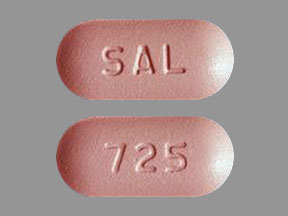Mycophenolate mofetil Disease Interactions
There are 6 disease interactions with mycophenolate mofetil.
Mycophenolate (applies to mycophenolate mofetil) neutropenia
Major Potential Hazard, Moderate plausibility.
Severe neutropenia has occurred in up to 2% of patients administered mycophenolate. Therapy with mycophenolate should be administered cautiously in patients with or predisposed to neutropenia. Mycophenolate should be discontinued or the dose reduced in patients who develop neutropenia (absolute neutrophil count <1300/mm3). Clinical monitoring of hematopoietic function is recommended. Complete blood counts should be performed weekly during the first month, two times a month during the second and third months, and monthly for the remainder of the first year of treatment.
Mycophenolate (applies to mycophenolate mofetil) GI hemorrhage
Moderate Potential Hazard, High plausibility. Applicable conditions: Gastrointestinal Hemorrhage, Inflammatory Bowel Disease, Peptic Ulcer
Gastrointestinal, rectal, and duodenal hemorrhage, hemorrhagic pancreatitis and rarely, large-intestine perforation have occurred in patients receiving mycophenolate. These events occurred primarily at dosages of mycophenolate >2 grams per day. Therapy with mycophenolate should be administered cautiously in patients with active gastrointestinal disease.
Mycophenolate (applies to mycophenolate mofetil) hepatic dysfunction
Moderate Potential Hazard, Moderate plausibility. Applicable conditions: Liver Disease
Mycophenolate mofetil (inactive) undergoes complete presystemic metabolism to active MPA , further metabolism to inactive forms, some of which undergo enterohepatic circulation producing a second peak of MPA. Alcoholic cirrhosis (parenchymal cell damage) does not appear to affect the metabolism of MPA to inactive forms. Hepatic disease/dysfunction due to other etiologies may induce different effects.
Mycophenolate (applies to mycophenolate mofetil) renal dysfunction
Moderate Potential Hazard, High plausibility.
Mycophenolate undergoes complete presystemic metabolism to its active form, MPA . Less than 1% of MPA is excreted in the urine. In a single-dose study, the area under the curve (AUC) for MPA in patients with severe chronic renal impairment (creatinine clearance <25 mL/min) was approximately 75% greater than those of healthy volunteers (creatinine clearance >80 mL/min). The AUC for the inactive metabolite was 3 to 6 times higher. Multiple dose studies have not been performed. No data are available for cardiac transplant patients with severe renal impairment and when benefit outweighs risk, therapy with mycophenolate should be administered with extreme caution.
Mycophenolate mofetil (applies to mycophenolate mofetil) HGPRT deficiency
Moderate Potential Hazard, Moderate plausibility. Applicable conditions: Lesch-Nyhan Syndrome
Mycophenolate mofetil is an inosine monophosphate dehydrogenase (IMPDH) inhibitor; therefore it should be avoided in patients with hereditary deficiencies of hypoxanthine-guanine phosphoribosyl-transferase (HGPRT) such as Lesch-Nyhan and Kelley-Seegmiller syndromes because it may cause an exacerbation of disease symptoms characterized by the overproduction and accumulation of uric acid leading to symptoms associated with gout such as acute arthritis, tophi, nephrolithiasis or urolithiasis and renal disease including renal failure.
Mycophenolate mofetil (applies to mycophenolate mofetil) vaccination
Moderate Potential Hazard, Moderate plausibility.
During treatment with mycophenolate mofetil, the use of live attenuated vaccines should be avoided and patients should be advised that vaccinations may be less effective. Advise patients to discuss with the physician before seeking any immunizations.
Switch to professional interaction data
Mycophenolate mofetil drug interactions
There are 353 drug interactions with mycophenolate mofetil.
Mycophenolate mofetil alcohol/food interactions
There is 1 alcohol/food interaction with mycophenolate mofetil.
More about mycophenolate mofetil
- mycophenolate mofetil consumer information
- Check interactions
- Compare alternatives
- Pricing & coupons
- Reviews (60)
- Drug images
- Side effects
- Dosage information
- During pregnancy
- Drug class: selective immunosuppressants
- Breastfeeding
- En español
Related treatment guides
Drug Interaction Classification
| Highly clinically significant. Avoid combinations; the risk of the interaction outweighs the benefit. | |
| Moderately clinically significant. Usually avoid combinations; use it only under special circumstances. | |
| Minimally clinically significant. Minimize risk; assess risk and consider an alternative drug, take steps to circumvent the interaction risk and/or institute a monitoring plan. | |
| No interaction information available. |
See also:
Further information
Always consult your healthcare provider to ensure the information displayed on this page applies to your personal circumstances.


